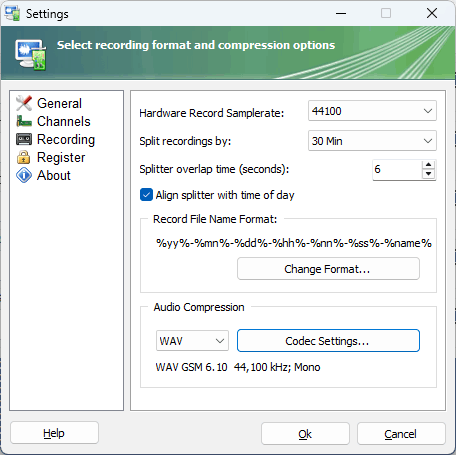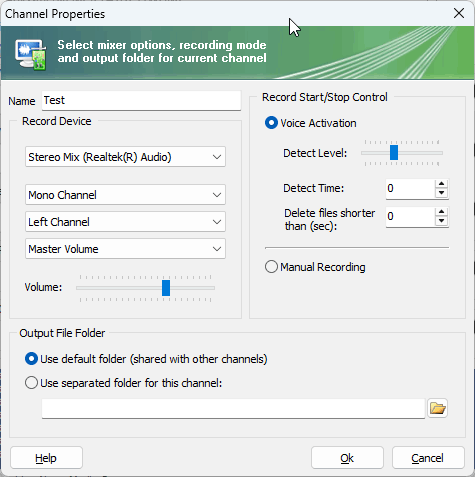
If you work in broadcasting, in a call center, or just want to record multiple audio sources at the same time - for example, radio broadcasts, phone lines, or studio mixes - you will need a multi-channel recording system. Such systems allow you to record dozens of audio channels on one computer at once and save them for later search, analysis or storage.
One of the most reliable programs for this task is Abyssmedia Multi-Channel Recording Software (MCRS). This professional solution is used by both large TV and radio companies and small Internet radio stations. In this article, I will tell you how to set up MCRS correctly, why it can be difficult, and what advantages using such a system provides. I will also share my experience, which will help you avoid typical mistakes.
1 Where is multichannel recording needed?
Multi-channel recording allows you to simultaneously save audio from multiple sources, whether it's different radio frequencies, phone lines, live broadcasts, or even individual microphones. This is especially important:
- For broadcasters who need to monitor the broadcast 24/7.
- For call centers where hundreds of calls need to be archived daily.
- For law firms that want to have evidence of conversations.
- For music studios where it is necessary to save each instrument separately.
The program works around the clock and automatically, saving files to the hard drive without user intervention. At the same time, you can choose the save format (WAV or MP3) and the compression level to balance between the quality and storage volume.
An interesting fact: one local radio station that I worked with used this system to record all of its broadcasts. They were able to completely abandon the physical archive of cassettes and switch to digital storage with the ability to instantly search for the right broadcast.
2 Hardware problem: how to do without expensive interfaces
One of the main difficulties in organizing multichannel recording is the equipment. Professional multi-channel audio interfaces are very expensive, and most budget sound cards only support stereo mode. What manufacturers refer to as "7.1" in advertising most often refers only to playback, not recording.
But there are solutions to this problem:
The first option is to use several inexpensive sound cards. One card can be used for one stereo channel or two mono channels. By connecting multiple USB-cards, you can increase the number of channels almost indefinitely. This is a cost-effective way, especially if you are starting with a small project.
The second option is unique for MCRS — working with multiple ASIO devices at the same time. According to standard specifications, ASIO allows you to work with only one device, but MCRS uses a modified host that supports two devices from different manufacturers. This allows you to create a powerful system without having to buy expensive interfaces.
Personal advice: Nowadays, almost any computer is equipped with a built-in sound card, which means you already have two mono channels. Installing a second card in the expansion slot will provide 4 recording channels. Then you can think about switching to a multi-channel ASIO interface or increasing the channels by connecting USB cards.
3 Setting up and launching multi-channel recording
After installing the program, you will see two shortcuts on your desktop - the WDM and ASIO versions cannot work simultaneously.

After the first launch, it is best to start by selecting the recording parameters. On the Recording tab, you must first specify the sampling frequency. Not only the quality of your recordings, but also the set of available codecs will depend on it. Having chosen between MP3 and WAV, you can go to "Codec Settings" and select the desired bit rate.

After that, you simply add channels, specify their name and recording source.

Now you can start recording in manual or automatic mode. The recording is ongoing, and all data is archived. At the same time, you can enable VOX (voice activation) mode, in which recording stops in moments of silence, which significantly saves disk space.
Information about the recordings, including the beginning, end and duration, is stored in the database, and the desired fragment can always be found through a convenient built-in browser. Individual events are stored in the log log and can also be studied later.
4 Automation and schedule
One of the key features of MCRS is the built-in scheduler, which allows you to manage the recording of each channel independently of each other. For example, you can record one radio in the morning and another in the evening.
If you prefer to split the audio archive into equal time intervals, then the duration of each segment can be set in the settings, and the cut-off time can be synchronized with the time of day. In order not to lose part of the sound at the junction of two consecutive recordings, you can set the overlap time.
This is especially useful for broadcasters who want to keep their broadcasts on the air without constant operator control. I myself configured MCRS so that it automatically records night broadcasts when no one is in the studio.
5 Archiving and recording management
The system can automatically clean up old files, freeing up space for new entries. You can specify how many days you want to keep the archive, for example, 30 or 90 days. After this period expires, the files are deleted and the system continues to work without interruption.
A built-in browser is provided for searching and viewing recordings, which shows a list of all recordings with the exact start and end times. No folders or chaotic files — everything is organized by day and channel.
You can also protect access with a password so that only authorized users can view or delete archives.
6 Additional features
MCRS offers several more useful features:
- Automatic Volume Control (AGC) — helps to equalize the volume between different sources.
- Volume Normalization — If you do not want to use AGC during recording, you can equalize the volume after finishing recording.
- Flexible compression settings — you decide for yourself whether the file will take up less space (low bitrate) or be as clean as possible (high quality).
- Sound Editor — free add-on that integrates into the recording browser and allows you to perform basic operations with your audio files.
7 Useful tips
Don't forget that recording phone calls or broadcasts can be legally regulated. In many countries, it is required to notify the interviewee that the conversation is being recorded. It is also important to ensure the security of archives, especially if they contain confidential information.
Make sure your disk is defragmented and has enough free space, otherwise the recording may be interrupted at the most inopportune moment.
Carefully study the capabilities of multichannel ASIO interfaces. Some of them in WDM mode allow working with only one stereo input, and the rest are accessible only through the ASIO driver.
8 Conclusion
Multi-channel recording is not a luxury, but a necessity for those who work with a large number of audio sources. Using Abyssmedia MCRS, you get a reliable tool that can work around the clock, save recordings in the right format and find any fragment in a matter of seconds.
I've gone from simple Audacity recordings to a full-fledged 32-channel system myself. And I can say that if you start with the right program, you will save yourself years of effort and nerves.
The main thing is to choose the right equipment, set up the system and monitor the archive.
